Team GearJunkie/YogaSlackers has competed in the Patagonian Expedition Race in Chile for the past three seasons, including podium finishes in 2011 and 2012. This article dissects some of the equipment the four-person team used in the 2012 race, held in February on a 400+ mile course including bike, trek, climb, and paddle sections in the wilds of Chilean Patagonia, where the squad took 3rd place.
By JASON MAGNESS
An environment as brutal and unforgiving as the untracked wilderness of Patagonia is an ideal place to test gear. As a racing team, however, it is less than ideal to go into that environment with gear that might perform below expectations. In the week before our team boarded a flight to Punta Arenas, Chile, for the 2012 Patagonian Expedition Race we found ourselves constantly assessing our priorities. Were we diehard gear testers willing to risk it all for the education of gear junkies everywhere, or just competitive adventure racers fighting hard for one of the highly contested spots on the podium with our tried-and-true standby gear?

By the start line, we found ourselves leaning toward the latter decision on tried-and-true gear, as the previous two years racing in Chile had seen us really dial an expedition race kit that we truly believe in. It is made of Ibex wool base layers and biking clothes, RAB synthetic insulation, 2XU compression gear, Mountain Hardwear sleeping bags, Platypus soft bottles and hydration reservoirs, Therm-a-Rest NeoAir sleeping pads (which double as swim flotation!), Drymax socks, Inov-8 backpacks and shoes, and lights from Fenix.
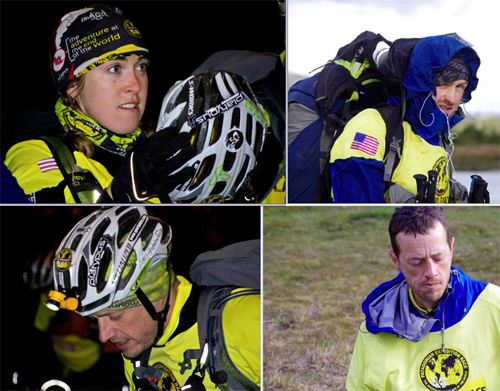
We also took new gear into the wilds, relying on brands we know and trust. Below are a few of the standout pieces from the race that we consider an essential part of our success. It took our team 262 hours of racing this year to make the podium for a third-place finish. This is a peek at the equipment that helped along the way. —Jason Magness, team captain, GearJunkie/YogaSlackers
RAB Stretch NeoShell Jacket and Pants — Having used RAB eVent jackets and pants for the last two Patagonia races, we’ve been nothing but pleased. So we decided to try the company’s newest creation, a line that uses a much-hyped waterproof/breathable fabric from Polartec called NeoShell. The RAB Stretch NeoShell jackets were heavier than the thin shells we’re used to, but there is a noticeable upgrade in breathability and durability. During strenuous activity in rain, hail and wet snow the jackets and pants allowed our bodies to breathe. So much so that when the sun did come out we often just kept the jackets on, something we’d not do with a normal hardshell. Water- and wind-proofness was excellent, and the jacket’s fit was one of the best I have ever tested. A great choice for a one-quiver shell jacket usable in a wide range of mountain activities and conditions.
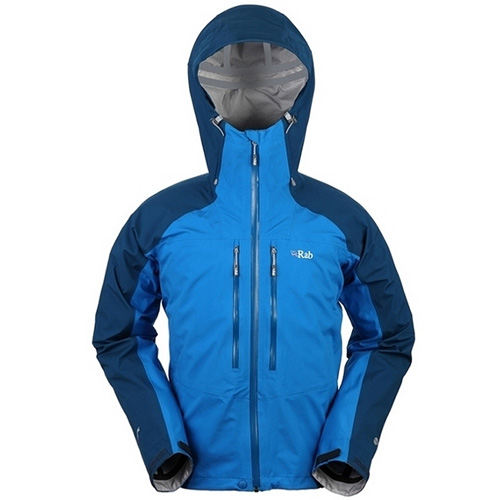
Mountain Hardwear Hoopla 4 — A four-person tent under 2 lbs.? We could not resist. Using a single pole that clicks together to make a hoop (called a “truss ring,” it actually doubles as a decent hula-hoop!), this floorless teepee-type shelter has more than enough room for four people inside. The truss ring allows for a lower ceiling height than similar structures so you can use a standard 130 cm trekking pole for setup as the center stake. The hoop also gives more space, a whopping 64 square feet inside! We left the optional clip-in floor at home and slept on pads on the ground. The tent held up amazingly in all sorts of wild conditions, including huge wind gusts. The only issue we had was finding an area big enough to set it up!
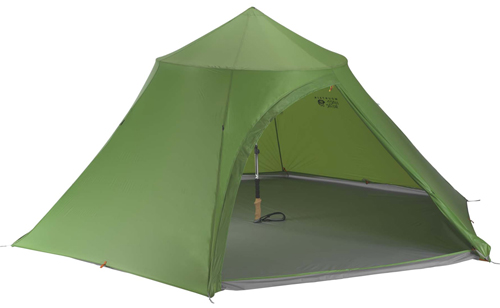
Inov-8 Ltd. 245 Ghost Boots — Don’t go looking for these boots on the Inov-8 website. They don’t actually exist, but the company developed these custom kicks for our team in 2012 for the Abu Dhabi Adventure Challenge. Only six pair were ever produced as far as we know. Essentially they are ultralight high-tops with an upper that is breathable, durable, and covered in a tight-knit fabric designed to keep grit and sand grains from working through. Combined with a gusseted tongue the shoes are 100% debris-proof if combined with a running gaiter. With a flexible sole, the Ghost boots run off trail like a minimalist shoe yet they can kick steps in snow up a mountain pass. Fingers crossed, Inov-8 will do a production run of these “magic boots” soon!
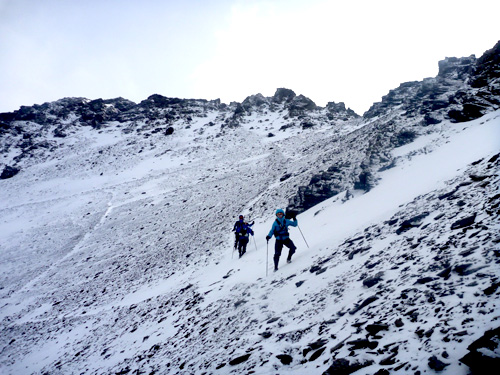
Specialized Deflect Gloves — Designed for cycling endeavors in temps down to 50 degrees F, our team has been using these beauties on the biking segments of our races for the past year. In Patagonia, two of us really put them to the test when we accidently left other gloves behind during a transition. We ended up having nothing more than the Deflect gloves for a 140km trek through the Darwin Mountain Range (see video here!) Windproof and water resistant, these gloves did eventually get wet, but they stayed pretty warm and dried fast once conditions changed. Combined with their dexterity and durability we proclaimed them to be the “most multi-purpose” adventure glove we’ve ever worn.
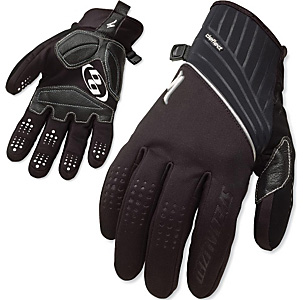
Wenger Sport Glasses — Leave it to Wenger, makers of the Swiss Army Knife, to come up with something of the equivalent in sunglasses. Called a “sport glasses system” the components are sold separately so that they are easily customizable. The components include frame, nose piece, lens shield, prescription insert, and a neoprene pad that rests against your forehead. Changing lenses was a breeze during the race, and because of the unique way that lenses connect to the frames, each lens set is different in more than just tint — shape, color, and construction are tailored to sport-specific functionality. We’d change lenses from paddling to biking to running all with the efficiency of well. . . a Swiss Army Knife.

Sterling Fusion Photon AT Rope — The race required a 40-meter “personal escape rope,” and so we took along this 7.8mm rope from Sterling. With a weight of under 4 pounds we almost forgot we were carrying it most of the race. But when we were high in the mountains, faced with leaping crevasses, climbing through steep bands of rock and ice, and crossing unstable snow bridges, it was essential.
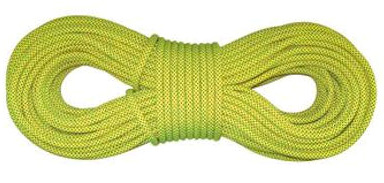
The rope gave us the confidence to move quickly over mountain terrain where an un-roped fall would have been deadly. The rope’s dry core kept it from taking on any extra weight during our many river swims, which were full and prolonged immersions, a feature that I know our teammate Dan (who was carrying it) truly appreciated.

Platypus SoftBottles — Made of a bomber nylon/polyethylene “film” material, the SoftBottle line from Platypus has been our water carrying containers of choice for all three years in Patagonia. The bottles come in sizes to 1-liter, and they screw tightly shut with a soda-bottle type cap. We carry a half-dozen of them on many races, with some of the bottles full, some stored away and ready for use if we need to grab water. They never leak, and the nylon/poly material is nearly indestructible. Best part, they weigh just 1 ounce when empty! When you’re done with them the SoftBottles roll up super small and can be stashed away unnoticed in a tiny space until you need to carry a quantity of water again.

Geigerrig and Platypus Water Filters — Our team has long been looking for an “on the go” hydration filter system. Along the way we’ve tested lots of functional gear that didn’t quite meet our needs, and a few that were total failures. Patagonia this year saw each team member creating their own custom system along the same lines. Using either the Geigerrig inline filter or the Platypus GravityWorks Filter, along with custom cut hose lengths and quick connectors, we ended up with a system that allowed us to fill up from any water source (even beaver ponds) and suck right through our bladder hose like normal. Only downside was that flavored water (nuun, powders, etc.) gummed up the works a bit. We’ll post another review with details once we get this system dialed!
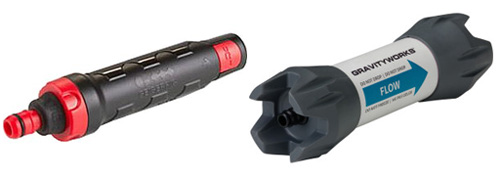
Black Diamond Ultra-Distance Trekking Poles — We’d seen these thin carbon poles used by other race teams before, and once we picked up a pair we had to try them. Weighing just a few ounces each, and collapsing to just over a foot long, these fixed-length carbon-fiber poles performed well beyond expectations. The rubber tips stuck to almost every surface, and the tiny baskets proved suitable through a range of terrain.
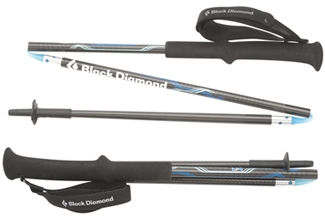
Collapsing and expanding them was nearly effortless, even with gloves on or with puffy, hypothermic hands. They stood up to the harsh conditions and thrashing of careless, sleep-deprived racers for days during the race until. . . within the last 24 hours of the race we lost or broke six of our eight total poles. Four snapped during a steep and slippery descent in a blizzard, and two disappeared during a brutal and dense bushwhack. We tested these poles literally to their limits, and then some. They are maybe not suited for the rigors of extreme expedition conditions, but the skinny carbon poles are brilliant under most every other trekking venue we can imagine.
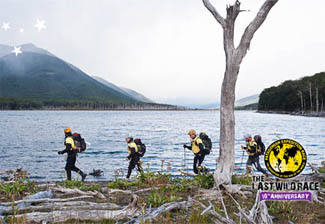
Outdoor Research Flex-Tex Gaiters — Our entire team loved these short running gaiters. Stretchy, windproof, breathable, and extremely abrasion resistant, these gaiters from Outdoor Research kept 100% of debris out of our shoes. While not waterproof (neither were our shoes), the gaiters dried fast, and they were incredibly easy to take on and off. The fit is superb on our shoe-boots, and they worked so well for us in the vast and harsh terrain of Patagonia that we eschewed using our more robust and traditional gaiters even when heading high into a snowy mountain pass. The underfoot strap was unbreakable, withstanding even the sharpest rocks.
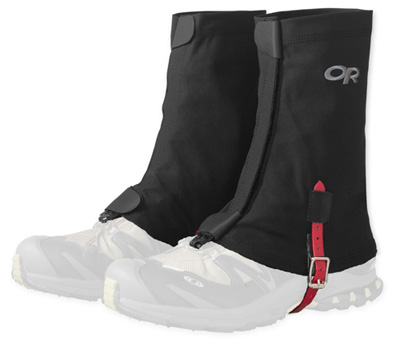
But by the end the hundreds of miles took their toll. Unfortunately, every single gaiter broke in some way by the end of the race, either at the buckle or the stitching attaching the strap to the gaiter. Outdoor Research is so close to the mark of an excellent ultralight gaiter here that we’ll surely be taking advantage of the company’s “infinite guarantee” to get new ones before our next race.
Fenix Lights — Expedition races are unique, requiring teams to often travel over a wide variety of treacherous and technical terrain at night, making choosing lights a serious issue. The biggest gear problem we had in Patagonia was making this decision in the days leading up to the race – but only because we had too many excellent choices. Since starting to use Fenix lights last year, we’ve been amazed at just how many suitable options there are. This year we decided to streamline and all use exactly the same so that battery management would be simple.
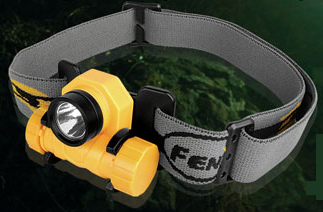
Fenix lights all take readily available batteries — either AAA, AA, or CR123 — so even when we arrive in a remote destination we can always find a way to power our lights.
For biking we use the HL21 headlamp on our helmets. It takes a single AA battery and offers a powerful 90 lumens to light up whatever our gaze drifts to while riding. Then on the handlebars we mount the powerful TK21 flashlight. It has four modes, the brightest throwing a 468 lumen beam far along the trail.
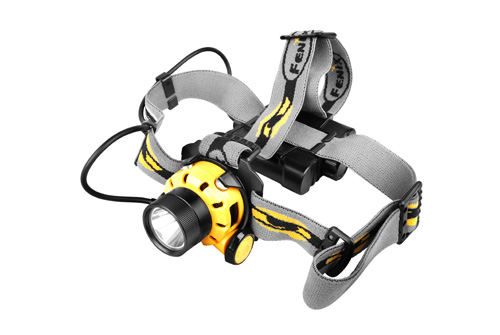
When we are on our feet or paddling, we switch to the long running HP11, whose four AA batteries usually see us through an entire 7 day (and night) race. (See our full review on that light in our story “Ultimate Gear Test: 7-Day Adventure Race” from last summer.) Fenix lights are waterproof and nearly indestructible, something we can personally attest to, having dropped them to the bottom of lakes, cliffs, and having them survive numerous high speed crashes. If only our bodies were a bit more like our lights… indestructible, long running, and when the energy does run out, easy to change the batteries on the go.
—See GearJunkie/YogaSlackers’ full race report, “High Insanity: Patagonian Exped Race.” Follow the squad all year as they race around the world on the Team GearJunkie micro-site.
